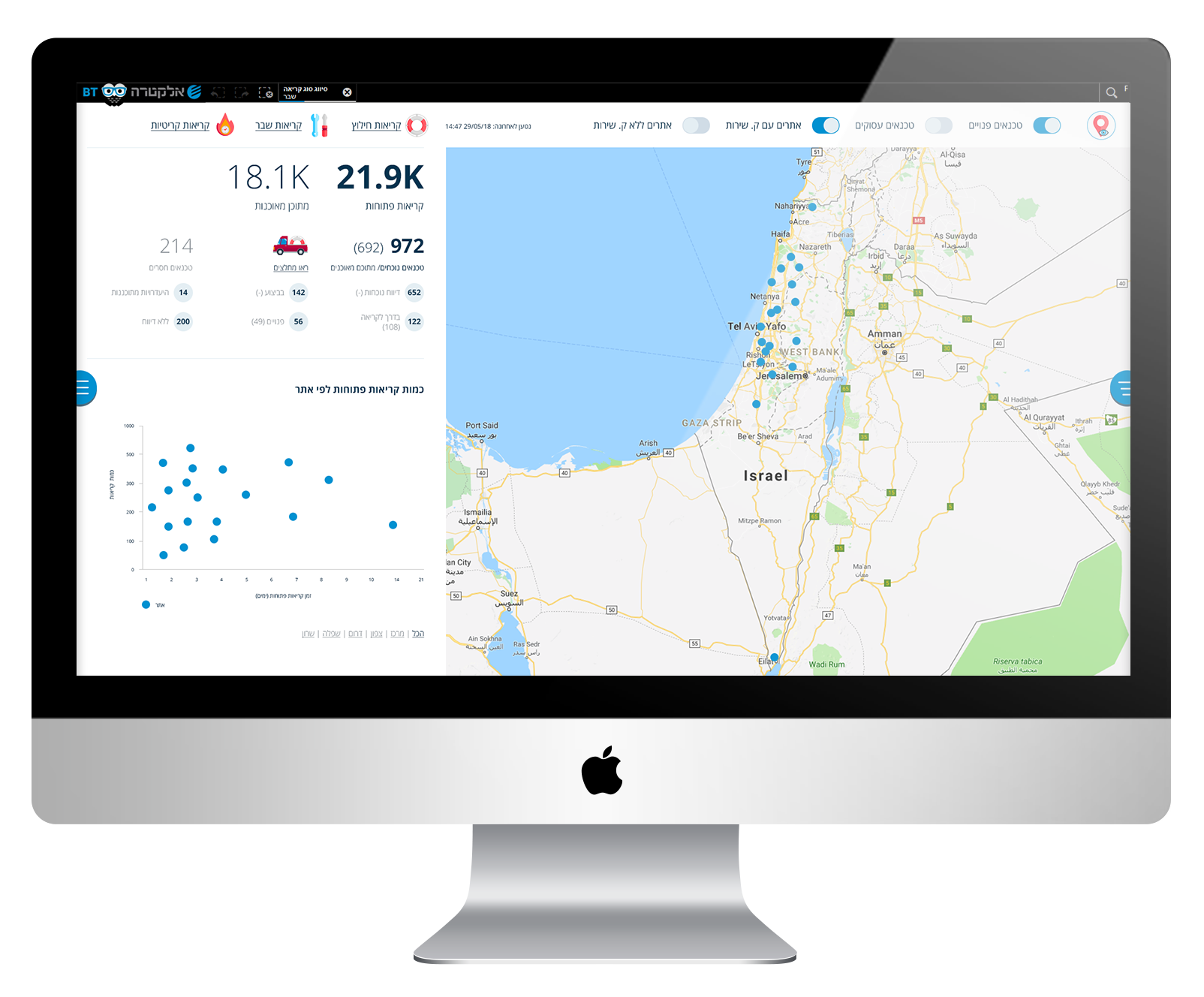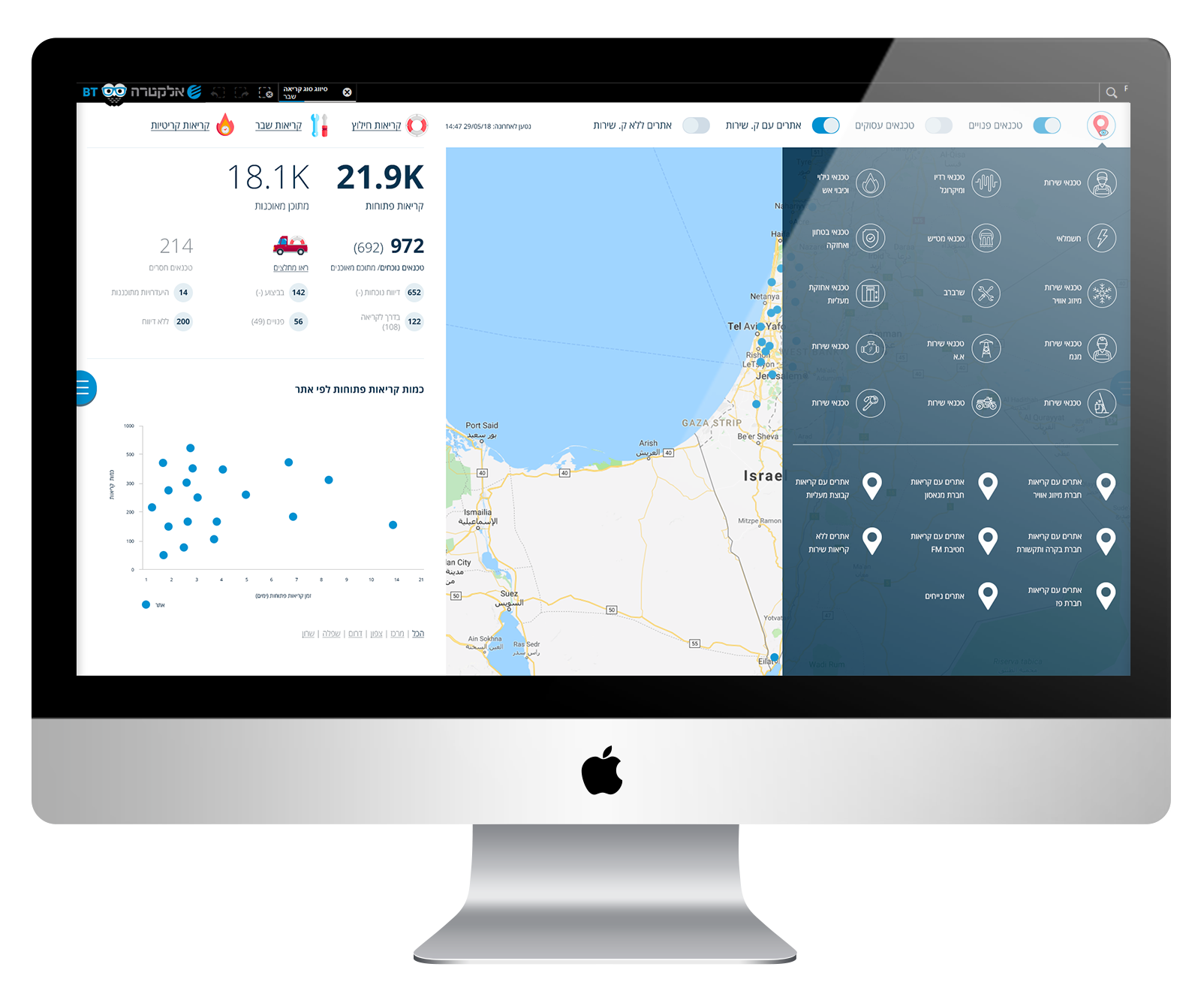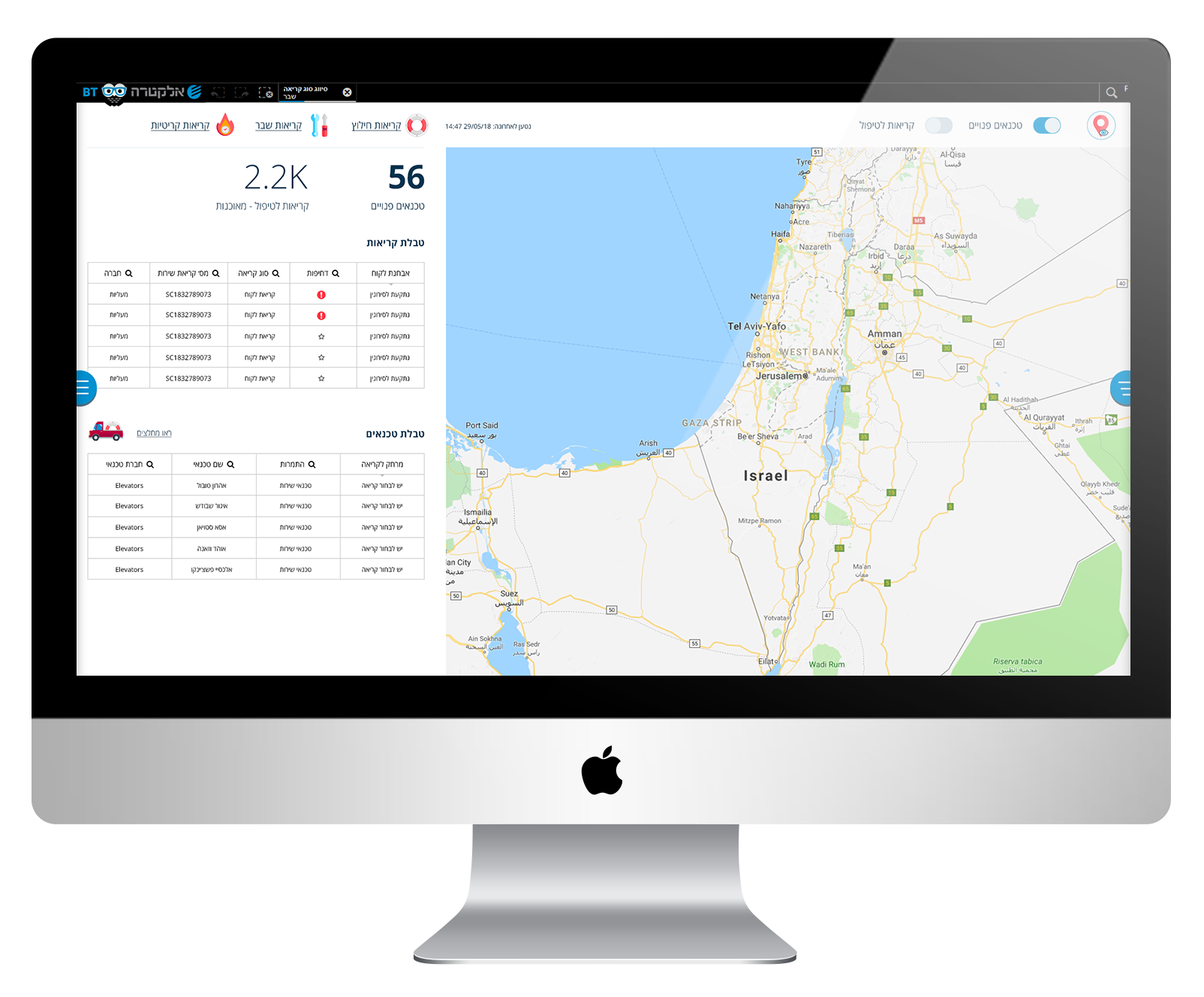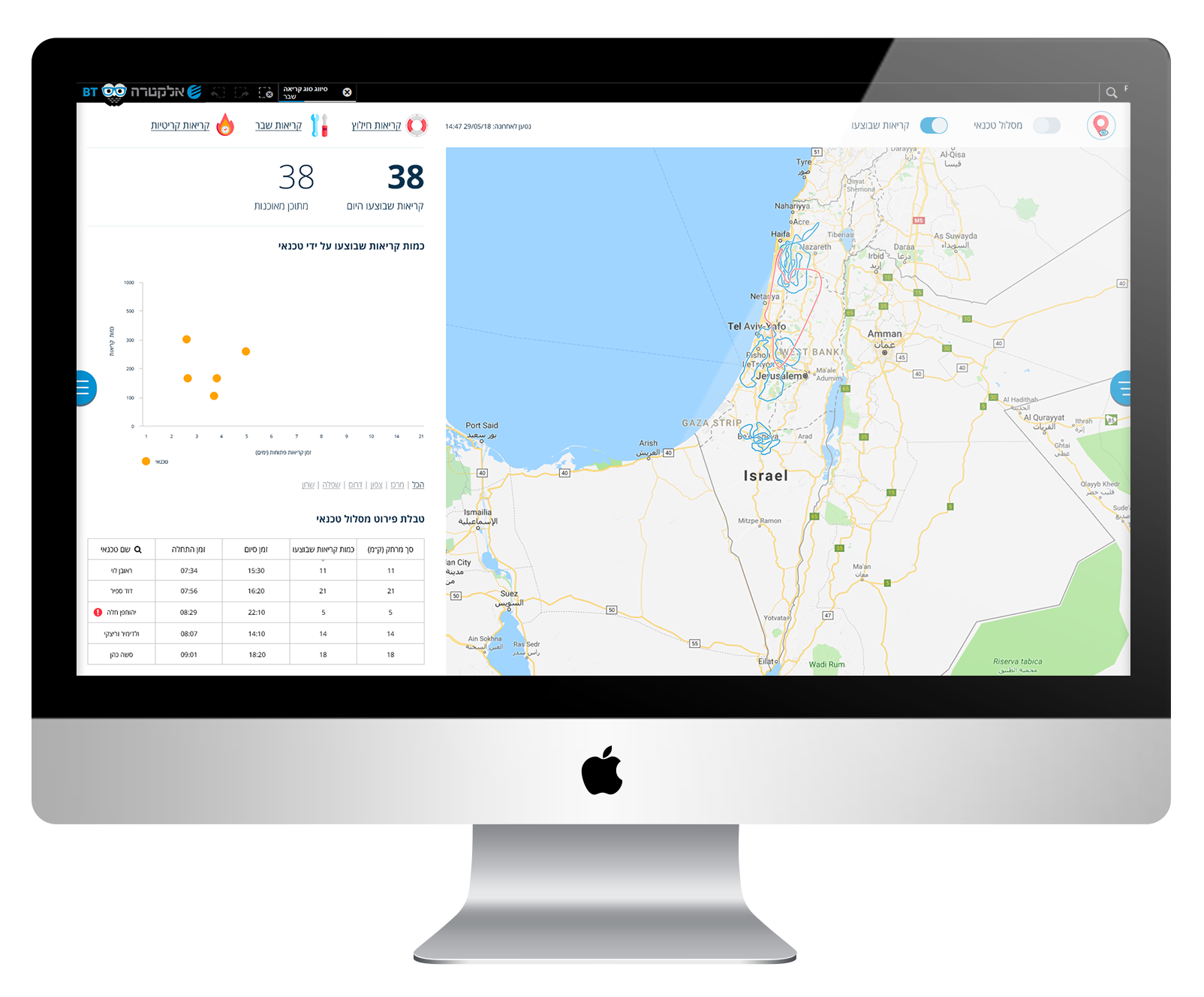Site management is a huge and spacious field, and all the companies who offer it have one ultimate goal: to efficiently deliver customer satisfaction. Elevators and air conditioners break down occasionally, and these malfunctions affect human life. When critical readings are observed, failure to address them can have serious consequences.
Electra asked me to build a system that would track site faults throughout the country and then automatically assign service personnel to fix them. The company would receive situational information from the field, assign specialists to address them, then summarize aspects of the worker’s efficiency, such as how long it took to arrive at the target site, or notify the center about any customer feedback about the incident. This summary would then be incorporated into a report about how responses might be improved, or flag how they are being abused and exploited.


The project manager on this case told me “BI brings out the ugliness of an organization.” That provoked me to ask deeper questions:
1. How does anyone know when a technician is reporting false information?
2. How can one flag an illegitimate report, something purposeful?
3. What is the significance of each flagged report?
My project manager told me the managers using the system would know how to read the clues, and would intuitively understand what had actually happened.
My suggestion was to set the system to notify them about anything that didn’t add up, such as unscheduled deviations from travel routes to and from maintenance sites.


I believe information of this sort is just as important as financial KPIs. While working on this project I learned in depth about a well-known company in Israel and the importance of its less attractive data—and how, by addressing these issues head-on, the group ultimately improved itself both in terms of the service it offers its customers and its reputation as a big and respected company.
